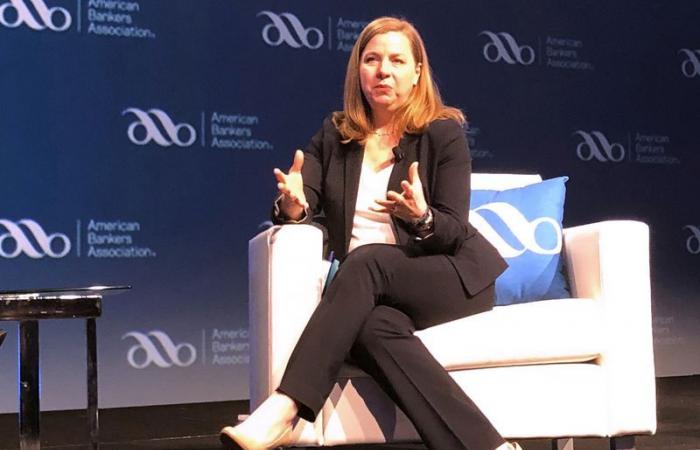US Federal Reserve Governor Michelle Bowman reiterated on Thursday that she was still not prepared to support a cut in interest rates from the central bank while inflationary pressures remain high.
The Fed’s current interest rate stance remains restrictive and price pressures are expected to ease even if monetary policy is maintained at current levels, Bowman said in a speech prepared for delivery at the 2024 Idaho, Nevada, Oregon and Washington Bankers Association Annual Convention in Stevenson, Washington.
If new data indicate that inflation is moving sustainably toward our 2 percent target, it may be appropriate to lower the federal funds rate gradually to prevent monetary policy from becoming too restrictive, Mr. Bowman said, adding that we are not yet at the point where it would be appropriate to lower the policy rate, and that I continue to see a number of upside risks to inflation.
Mr. Bowman added: “I remain willing to raise the target range for the federal funds rate at a future meeting if available data indicates that progress on inflation has stalled or reversed.
The Fed governor’s remarks were largely in line with her recent comments on the economic and policy outlook. She spoke as Fed officials are looking for evidence that inflationary pressures are moving closer to the 2% target. Officials have currently projected a quarter-percentage-point cut this year, and many markets expect that to happen at the September Federal Open Market Committee meeting.
Earlier this week, Ms Bowman said she did not anticipate any cuts this year and was considering the possibility of easing next year.
In her speech on Thursday, Ms Bowman said overall activity was strong this year, but had slowed, amid slowing progress on inflation. She noted that an easing of financial conditions created challenges for the future direction of prices.
There is also a risk that the easing of financial conditions since late last year, reflecting considerable gains in equity valuations, and additional fiscal stimulus will add momentum to demand, stalling any progress additional or even causing a re-acceleration of inflation, she said.
Bowman also said the decline in the number of banks in the United States is a problem. At the same time, there are not enough new banks being created.
Failure to create de novo banks in the long term will create a void in the banking system that could contribute to a decrease in the availability of reliable and fairly priced credit, a lack of financial services in underserved markets and the continued shift of banking activities out of the banking system, she said. (Reporting by Michael S. Derby; Writing by Andrea Ricci)






